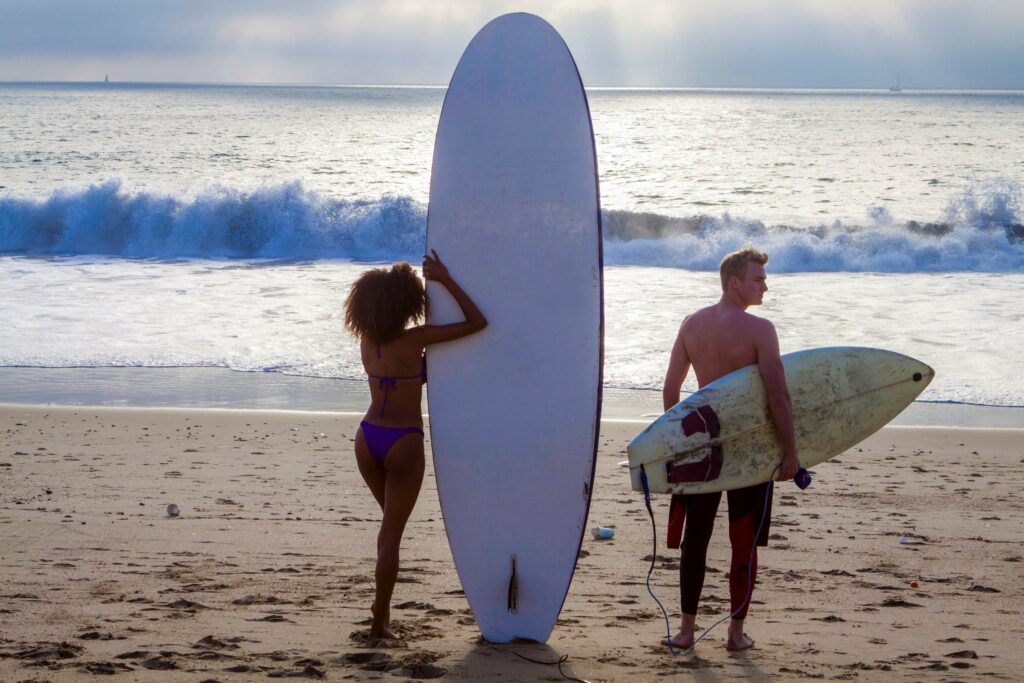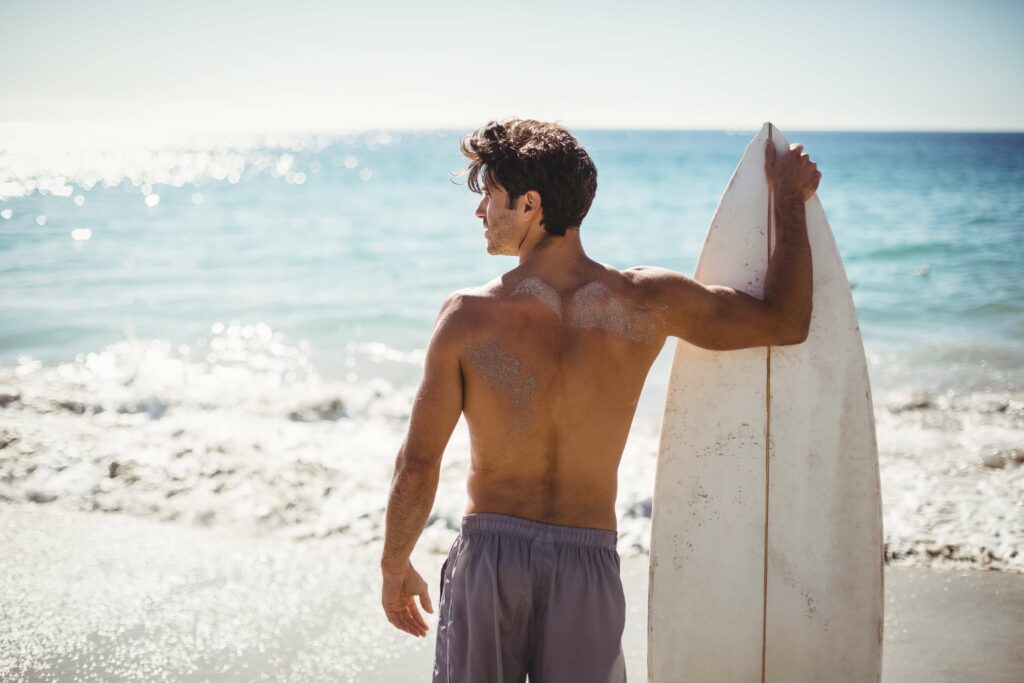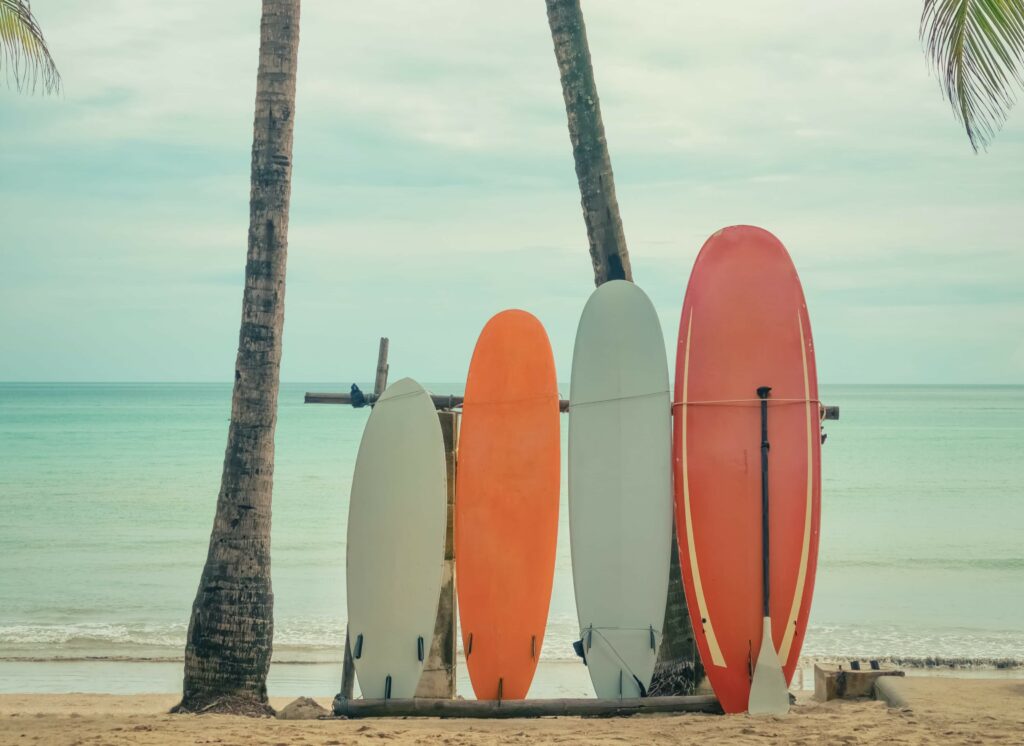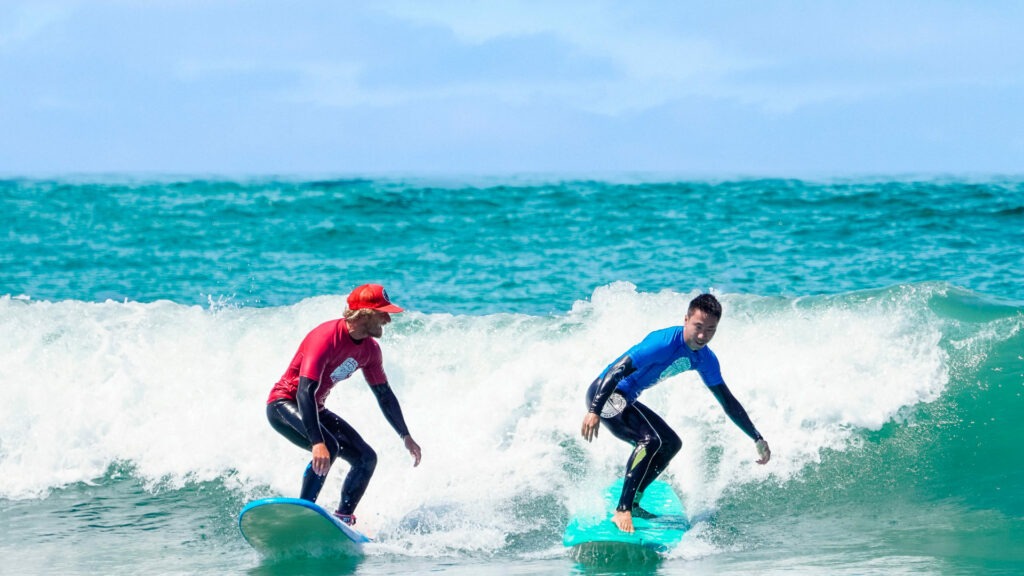How To Choose The Perfect Surfboard Height
Surfing is not merely a sport; it’s an exhilarating journey that allows us to ride the untamed power of the ocean waves. Whether you’re a seasoned surfer or a beginner, one critical factor that can greatly impact your performance and enjoyment is choosing the right surfboard height. The proper surfboard height can make a world of difference in your ability to catch waves, maneuver on the face of the water, and maintain control throughout your ride.
In this blog, we will delve into the intricacies of selecting the ideal surfboard height, providing you with valuable insights, expert advice, and practical tips on how to choose surfboard height to enhance your surfing experience. So grab your wetsuit, wax up your board, and let’s dive in to unravel the secrets of finding the perfect balance between wave-catching and wave-riding prowess.
Understanding Surfboard Height
Surfboard height, also known as the board’s rocker, refers to the curvature from nose to tail. It should not be confused with the overall length of the board. The height of the surfboard plays a vital role in determining its performance characteristics. By understanding the difference between length and height, you can make an informed decision when selecting a surfboard.
5 Tips on Choosing the Right Surfboard Height
The surfboard height plays a pivotal role in determining your balance, speed, and control of the waves. Choosing the right height is essential for maximizing your performance and getting the most out of every surf session. Let’s dive into the factors you should consider when selecting the perfect surfboard height.
#1 Keep Your Skill Level in Mind
Your skill level is a crucial aspect to consider when choosing the surfboard height. Beginners typically benefit from longer, wider boards with greater buoyancy, providing stability and easier paddling. Intermediate and advanced surfers, on the other hand, prefer shorter boards for better maneuverability and tighter turns. Assess your skill level honestly to determine the ideal surfboard height for your abilities.
#2 Understand Wave Conditions
The size and power of the waves you intend to ride are vital factors in selecting the ideal surfboard height. For small, mellow waves, a longer board can help maintain speed and stability. In contrast, for larger, more powerful waves, a shorter board provides better control and responsiveness. By matching your surfboard height to the wave conditions, you can maximize your performance and truly master the waves.
#3 Body Type and Fitness Level
Your body type and physical attributes should also be considered when choosing the surfboard height. Taller and heavier surfers often require longer and wider boards for optimal buoyancy and stability. Conversely, shorter and lighter surfers might find shorter boards more maneuverable and easier to control. Ensure your surfboard height is tailored to your body type to enhance your comfort and surfing experience.
- Small and Light | 5’4″ – 5’10” (163cm – 178cm): If you have a smaller frame and lighter weight, a surfboard height ranging from 5’4″ to 5’10” (163cm to 178cm) is recommended. This size range offers increased maneuverability, allowing you to easily control the board and perform quick turns.
- Medium Build | 5’10” – 6’4″ (178cm – 193cm): For surfers with a medium build, falling within the height range of 5’10” to 6’4″ (178cm to 193cm), selecting a surfboard within this range will provide a balanced combination of stability and maneuverability. It allows you to maintain control while enjoying a wider variety of wave conditions.
- Tall and Heavy | 6’4″ and above (193cm and above): If you have a taller and heavier build, measuring 6’4″ (193cm) or above, choosing a surfboard height within this range will offer increased stability and buoyancy. This allows for better wave-catching ability and overall control, especially in larger waves.
#4 Personal Surfing Style & Preferences
Your riding style and personal preferences should also be taken into account when selecting a surfboard height. Aggressive and powerful riders may benefit from a slightly lower surfboard height to enhance their maneuverability. On the other hand, more casual and cruisy riders might prefer a taller surfboard for stability and smooth rides. Your unique style and approach to surfing will help you determine the ideal surfboard height that suits your needs.
#5 Testing and Fine-Tuning
Finding the perfect surfboard height often involves a process of trial and error. It’s essential to test different heights and make adjustments based on your experience in the water. Don’t be afraid to seek expert advice from surfboard shapers or experienced surfers who can provide valuable insights and recommendations. Fine-tuning your surfboard height will help you maximize your performance and enjoy the waves to the fullest.
The Importance of Professional Guidance in Choosing the Right Surfboard Height
While it may seem tempting to select a surfboard solely based on personal preference or online recommendations, enlisting the expertise of a professional can greatly enhance your surfing journey. Here is what you need to know:
Individual Assessment
A professional surfboard shaper or surf shop attendant will assess your individual characteristics, including height, weight, skill level, and surfing style. They have the knowledge and experience to determine the optimal surfboard height that complements your physique and abilities, ensuring maximum performance and maneuverability.
Tailored Customization
Professional surfboard shapers can craft custom boards tailored to your specific needs. They consider factors like wave conditions, your preferred surfing locations, and the type of waves you most commonly encounter. This customization allows for better wave-catching ability, stability, and control, resulting in a more enjoyable and productive surf session.
Technical Expertise
Surfboard design is a complex science that involves understanding the relationship between length, width, volume, rocker, and fins. Professionals possess in-depth knowledge of these technical aspects and can interpret their effects on your surfing performance. They can guide you through the intricate process of choosing the right surfboard height, ensuring an optimal match for your skill level and surfing objectives.
Experience and Feedback
Surfboard professionals have extensive experience working with a variety of surfers, from beginners to elite athletes. They have witnessed countless surfers progress and understand the common pitfalls and challenges faced at different skill levels. Their valuable feedback and insights can help you avoid mistakes and make informed decisions when selecting a surfboard height.
Adaptability and Growth
As your surfing skills improve, your ideal surfboard height may change. A professional can anticipate and accommodate these changes by suggesting suitable adjustments to your board’s dimensions. They can provide ongoing support and advice, ensuring that your equipment keeps pace with your progression in the sport.
Learn to Surf Like a Pro!
Choosing the right surfboard height is crucial for surfers of all skill levels. By understanding how surfboard height affects performance and considering factors such as skill level, wave conditions, body size, and riding style, you can make an informed decision. Remember, finding the perfect surfboard height may require some experimentation and expert guidance. So, why not take the next step in your surfing journey?
Contact Pacific Surf School today to schedule a surf lesson. Our experienced instructors will not only teach you how to choose the right surfboard height but also guide you in mastering the art of riding the waves like a pro.
Don’t miss out on the opportunity to enhance your surfing skills and experience the thrill of catching waves with confidence. Start your surfing adventure now!
FAQs
The surfboard height directly influences stability in the water. Longer boards offer increased stability, making them ideal for beginners or surfers who prefer a more relaxed ride. Shorter boards, on the other hand, sacrifice some stability for enhanced maneuverability and responsiveness.
Yes, longer surfboard heights are generally more suitable for smaller waves. The additional length provides better glide and helps you catch waves with ease, even in slower conditions.
While it is possible to use the same surfboard height for different surfing styles, it may not optimize your performance in each style. If you have a specific style preference, consider choosing a surfboard height that aligns with the characteristics required for that style.
Yes, body weight is an important consideration when choosing surfboard height. Taller and heavier individuals often require longer boards to provide adequate buoyancy and stability, while shorter and lighter individuals may find shorter boards more manageable.
It is generally recommended to err on the side of a longer surfboard height if you’re unsure. Longer boards offer greater stability and forgiveness, making them more forgiving for beginners and providing a good foundation for skill development.
As your surfing skills progress, it’s essential to reassess your surfboard height periodically. Advancing to a shorter board can enhance your maneuverability and push your performance boundaries, while switching to a longer board can offer stability in challenging conditions.








